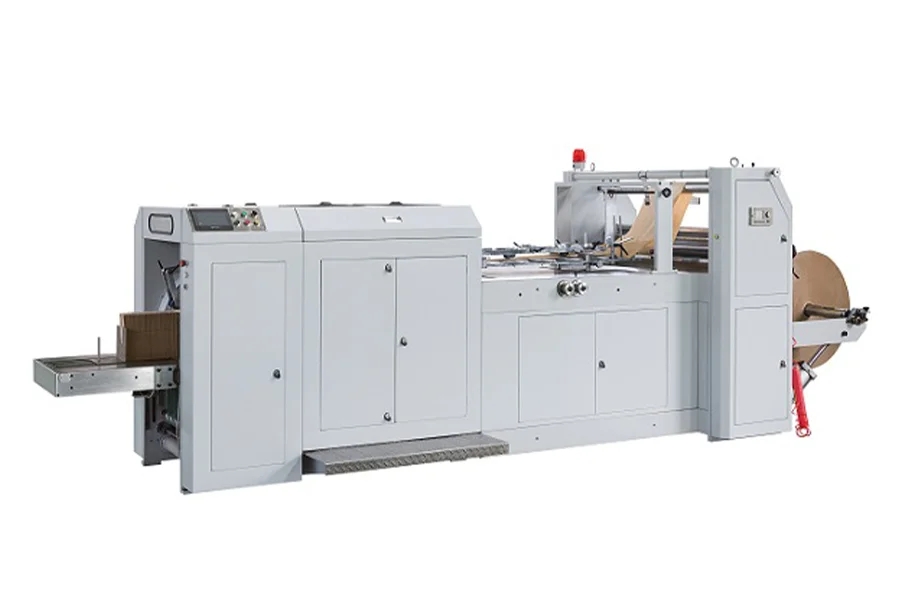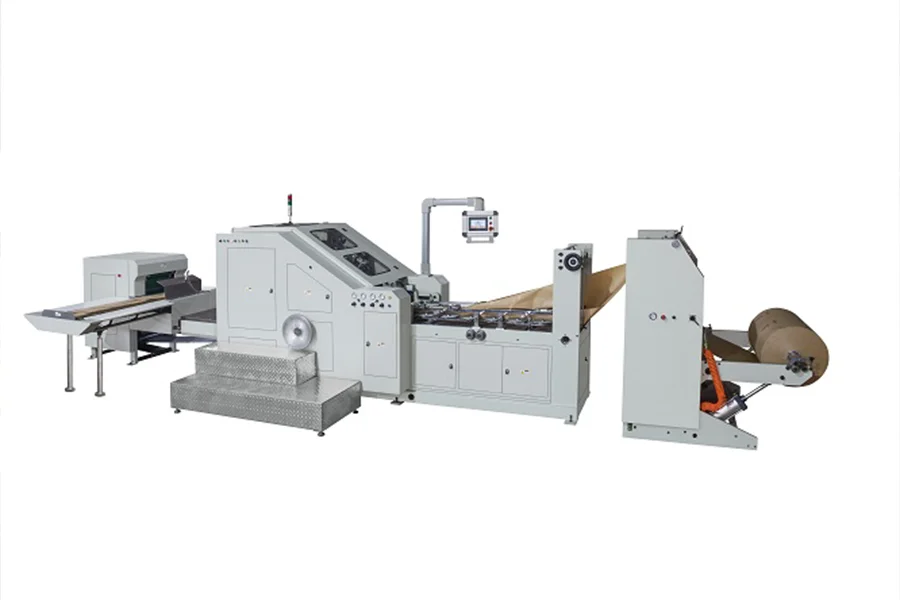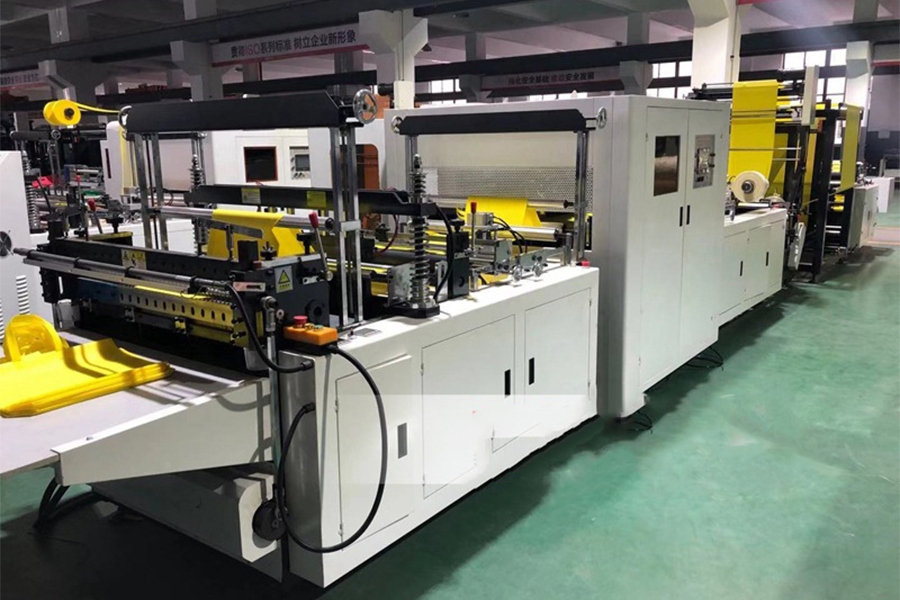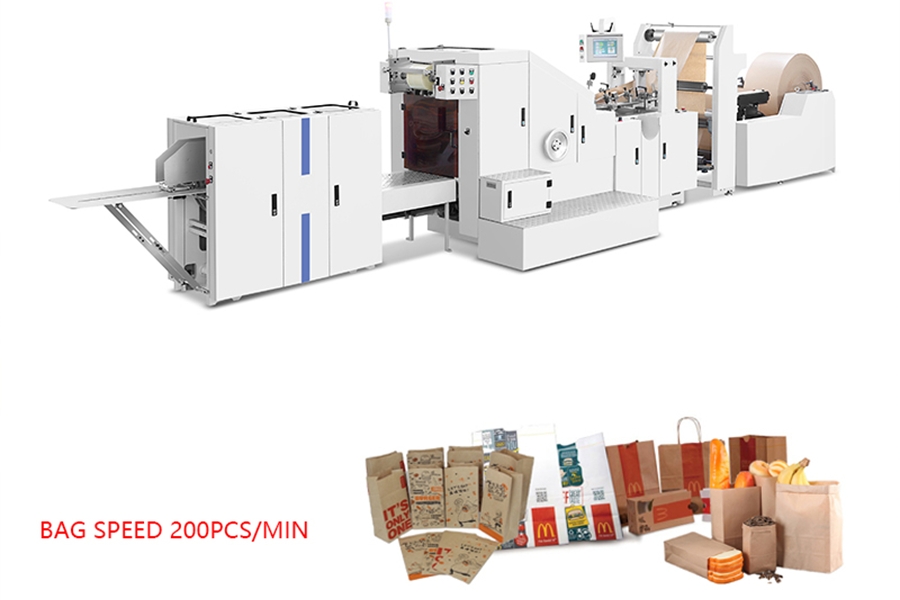Every mall, pharmacy, and almost all outlets will have some form of packaging of goods for their clients, such as boxes and bags. Bag-making machines are responsible for manufacturing those bags. Without them, the ferrying of goods would be pretty tedious. Therefore, it’s important to learn what precisely bag-making machines are and how to select one for your business.
Table of Contents
bag-making machines: market share and demand
Key tips to consider when buying bag-making machines
Types of bag-making machines
Target market for bag-making machines
Bag-making machines: market share and demand
The current market value of bag-making machines is $119.9 million. Recent trends have seen a surge in the development of environmentally friendly bags. This is because 50% of packaging bags are disposed of incorrectly, leading to environmental pollution. As packaging accounts for 40% of plastic usage, industries are focusing on developing better solutions to package goods without polluting the environment.
Key tips to consider when buying a bag-making machine
This article will highlight the critical factors businesses should look out for when purchasing a bag-making machine.
Expected market order volume
The monthly volume of a bag-making machine is 5.8 million W-cut bags. However, the same machine would make 4.6 million D-cut bags a month or 0.6 million box bags. This is a consideration for businesses depending on their order volume of bags.
Bag type corresponding machine capacity
Bag-making machines are classified according to schemes, namely schemes A-H. Each scheme can produce a certain number of bags for either W-cut, D-cut, or box bag. Scheme A machines can make 2.3 million W-cut bags a month. However, they cannot make D-cut or box bags. Scheme D machines can manufacture 0.8 million pieces of W-cut bags or 2.3 million D-cut bags, while scheme G machines can manufacture 2.3 million D-cut bags or 1.9 million box bags monthly.
Bag type corresponding bag-making machine
W-cut bags can only be made by machines in schemes A and B. Schemes C and D can manufacture W-cut, D-cut, and shoe bags, while schemes E and F can only manufacture handle bags, box bags, and D-cut bags. Find a list of the machine schemes and the bags they can manufacture below.
| Bag type | Width | Height | Gusset | |
| W-cut | 200-575 | 100-700 | 60 – 160 | |
| D-cut | Without gusset | 100-700 | 200-600 | / |
| Handle bag | ||||
| Shoes bag | ||||
| D-cut | With gusset | 100-700 | 200-570 | 60-160 |
| Handle bag | ||||
| Box bag- MJNBH series | 100-640 | 200-570 | 60-160 | |
| Box bag – BEYONDER | 200-500 | 180-450 | 80-200 |
Bag material
Bags can be made from different materials. They include non-woven materials, cardboard, corrugated cardboard, and plastic. Depending on the business order, the machine chosen should be able to work with the material a business will frequently use.
Bag size and shape
There are several pre-determined bag sizes and shapes to choose from. They are W-cut bags, box bags, and D-cut bags. The size of the W-cut bag is 200mm x 100mm x 60mm. D-cut bags measure 200mm x 60mm while box bags measures 100mm x 200mm x 60mm. Each of these sizes is manufactured by a different machine. Knowing the bag size to be manufactured is therefore important for prospecting businesses.
Types of bag-making machines
This segment will highlight the various types of bag-making machines.
Full automatic paper bag-making machine
The full automatic paper bag-making machine is fully automated for efficiency in operation.

Features:
- It has a touch screen and PC control system.
- It has a programmed counting system to count the bags manufactured.
- It has a color maker tracking system for efficient cutting of bags.
Pros:
- It consumes less space and is portable.
- It can operate with minimal human intervention.
- It’s exact in the collection and folding of bags.
Cons:
- It’s expensive to acquire and maintain.
- It requires a specialist in the event of a breakdown.
Semi-automatic paper bag-making machine
The semi-automatic paper bag-making machine borrows some aspects from the manual system.

Features:
- It has a robust construction to ensure minimal vibration.
- It smoothly varies the sizes of paper bags to be produced.
- It can be fitted with one size plate and one size gear for a one size paper bag.
Pros:
- It requires little maintenance.
- It consumes less power than the fully automatic paper-making machine.
- It’s quick and easy to operate.
Cons:
- The initial cost is high.
Manual paper bag-making machine
The manual paper bag-making machine was the first paper bag-making machine. They are not hard to operate but use manual principles.

Features:
- It works with an electric voltage of 240V.
- It has a stiff design.
Pros:
- It’s durable.
- It requires little to no maintenance and servicing.
Cons:
- It requires constant human supervision.
- It’s slower in operation, producing 50-60 bags per hour.
Square bottom paper bag-making machine
The square bottom paper-making machine uses rolling paper as raw material and makes 100% biodegradable bags.

Features:
- It has a touch screen interface.
- It’s fitted with a servo motor drive to drive the machine faster.
- Material lifting is regulated with a pneumatic lift structure.
Pros:
- It’s flexible and can incorporate other techniques.
- It’s durable and saves energy.
Cons:
- It’s complex to operate.
- It takes more time to process a paper bag.
Target market for bag-making machines
Bag-making machines are projected to grow at a CAGR of 5.4% until 2027. The Asia-Pacific region has dominated this industry with a market share of 38.4 % and is expected to continue dominating, registering a CAGR of 7.8 %. The demand for packaging bags in pharmaceutical, food, and other industries is expected to cause this growth. The North American region and Europe are projected to be the second and third largest markets for bag-making machines, respectively.
Conclusion
Not all bag-making machines will suit any bag-making business. While some are efficient for producing large volumes of bags, other machines are best for smaller businesses. This guide highlighted the target market for bag-making machines, their types, and factors to consider before purchasing. More information on bag-making machines can be found in the bag-making machines section on Chovm.com.





 বাংলা
বাংলা Nederlands
Nederlands English
English Français
Français Deutsch
Deutsch हिन्दी
हिन्दी Bahasa Indonesia
Bahasa Indonesia Italiano
Italiano 日本語
日本語 한국어
한국어 Bahasa Melayu
Bahasa Melayu മലയാളം
മലയാളം پښتو
پښتو فارسی
فارسی Polski
Polski Português
Português Русский
Русский Español
Español Kiswahili
Kiswahili ไทย
ไทย Türkçe
Türkçe اردو
اردو Tiếng Việt
Tiếng Việt isiXhosa
isiXhosa Zulu
Zulu